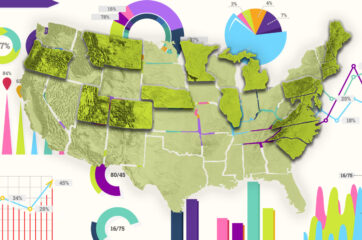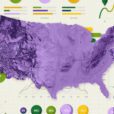An Analysis of the Job Creation and Community Benefits of the Green Future Act
This report analyzes the job creation and community benefits of the Green Future Act (H.3292), a bill currently being considered by the Massachusetts state legislature. The Climate XChange research team examined and summarized the policy design of the Green Future Act, including an analysis of the bill’s two sources of funding: carbon pollution pricing and green bonding. The paper also examines the bill’s preference for spending in environmental justice communities, on municipal aid, and its use to promote green infrastructure. Researchers break down each expenditure item, showing how much of the total revenue is spent on household dividend payments to energy consumers, green infrastructure, and workforce development. Using findings from a previous report, Investing in a Better Massachusetts, researchers model the job creation potential of a representative 2030-aligned portfolio of 18 public investment program areas in the state. Building further on the insights of that previous report, researchers find significant community benefits in the form of consumer and business savings on utilities, reduced traffic congestion, public health benefits from cleaner air, increased physical activity, and safer transportation systems.
The Green Future Act and Massachusetts Climate Policy
The Green Future Act is a response to the Next Generation Roadmap law (S.9), a sweeping update to Massachusetts climate policy that passed into law in April 2021. A key component of S.9 was updating the state’s climate goals to be more ambitious and better align with climate science. As a result, Massachusetts must now meet emissions reductions of 50% by 2030, 75% by 2040, and net-zero by 2050 (all based on 1990 emissions levels). Although S.9 set these new emissions goals and included a number of other key updates to state law (including environmental justice policy and local stretch energy codes, to name a few), it does not raise significant new revenue to pay for the infrastructure needed to meet them.
According to supporters, this is where the Green Future Act comes in. The Green Future Now campaign, a coalition of 29 climate and community groups in Massachusetts, echoes this concern saying, “Massachusetts does not have the funding it needs to meet its climate goals set by the Next Generation Roadmap bill.” Going further, the coalition outlines that without a “clear plan to sustainably and equitably raise green money, our state risks being forced to adopt regressive taxes and miss the opportunity to create local jobs.”
As summarized in this report, the Green Future Act expands the state’s existing carbon pollution pricing system to include pollution originating from fossil fuel use in transportation and heating. This, alongside green bonding, raises funds for in-state green infrastructure projects aimed at reducing emissions in the state. Eligible projects include public transit, clean energy, home energy efficiency, and electric vehicles, to name a few. Spending decisions are made at both the state and local level, with money reaching municipalities through direct aid to cities and towns. Spending that benefits environmental justice (EJ) communities is prioritized in the Green Future Act, with 60% set to benefit EJ populations and EJ voting representation required in making local spending decisions. Money is also set aside to support any displaced fossil fuel workers, as well as funds to provide 100% cost rebates to low-income households.
The Green Future Act currently has 67 co-sponsors, including a majority of House Democrats, a Republican, and an independent member of the House. A similar bill has been filed in the Senate (S.2133) by Senator Michael Barrett, which expands the use of pollution pricing and creates administrative structures for spending revenue on similar green investments and a households dividend program.
Like most legislative sessions in Massachusetts, this one features a number of other prominent bills, including bills to achieve 100% renewable energy (H.3288/S.2136) and the Building Justice with Jobs Act (S.2226/H.3365). Taken together, the Green Future Act complements them by raising money to be spent directly on the priorities they outline (renewables and building retrofits, respectively). In this sense, the Green Future Act creates a foundation for other current and future climate policy proposals, no matter which sector’s emissions they target.
Overview of Report
This report analyzes the job creation and community benefits of the Green Future Act (H.3292), a bill currently being considered by the Massachusetts state legislature.
The Climate XChange research team examined and summarized the policy design of the Green Future Act, including an analysis of the bill’s two sources of funding: pollution pricing and green bonding. The paper also discusses the bill’s preference for spending in environmental justice communities and the use of municipal aid to advance green infrastructure projects and community programs. The relationship of the bill to the Next Generation Roadmap (S.9), an update to the state’s fundamental policy passed into law in 2021, is also examined.
Researchers outline the expenditure structure for the Green Future Act and, when combined with practical pricing-level assumptions, find that the bill is likely to raise over $9.6 billion in new revenue between 2023 and 2030. The report breaks down each expenditure item, showing how much of the total revenue is spent on household dividends to energy consumers, green infrastructure, and workforce development.

Using findings from our previous report, Investing in a Better Massachusetts, researchers model the job creation potential of a portfolio, aligned with Massachusetts’ 2030 climate goals, of 18 public investment program-areas in the state. The analysis, completed using IMPLAN economic software, finds that spending from the bill between 2023 and 2030 will create 83,700 net new jobs in Massachusetts.
Building further on the insights of our previous report, researchers also find significant community benefits in the form of consumer and business savings on utilities, reduced traffic congestion, public health benefits from cleaner air, increased physical activity, and safer transportation systems. In total, H.3292 is expected to unlock at least $17.7 billion due to revenue raised through 2030.
Key Findings
The Green Future Act raises $8.8 billion for green investments in state infrastructure, local aid, and workforce development. Through 2030, approximately $6.4 billion is directed to statewide green investments, with $2.2 billion distributed to municipalities for local green investments. An additional $5 million annually is dedicated to workforce development and support for displaced fossil fuel workers.
The Green Future Act invests a significant $5.3 billion in projects that take place in and directly benefit environmental justice (EJ) populations. A key design principle of the bill is that no less than 60% of all infrastructure spending in the bill must be directed towards benefits for EJ populations (not just neighborhoods they reside in). Even beyond that, the bill outlines a model for more authentic community-led spending decisions, with representatives of EJ populations developing and making decisions over which projects Green Future Act money is spent on.
The Green Future Act generates 83,700 net new jobs in Massachusetts. Two-thirds of new jobs created by the bill are created in the near term from direct investments into climate-related infrastructure through 2030. New labor opportunities span many different industries, with particularly strong job creation in construction, architecture and engineering services, real estate, and other technical fields.
Another third of jobs created are due to the increased spending power of households, businesses, and institutions in the Commonwealth. Both statewide and local green investments create long-term energy savings, which reduces state reliance on imported fossil fuel energy. This avoids sending money to out-of-state energy producers in favor of local spending.
The spending power of low- and moderate-income households additionally rises due to payments received through the Household Dividend Fund.
The Green Future Act creates at least $17.7 billion in community benefits from state and local climate investments funded by revenue raised through 2030. These benefits include consumer and business savings on utilities, reduced traffic congestion, public health benefits from cleaner air, increased physical activity, and safer transportation systems.










